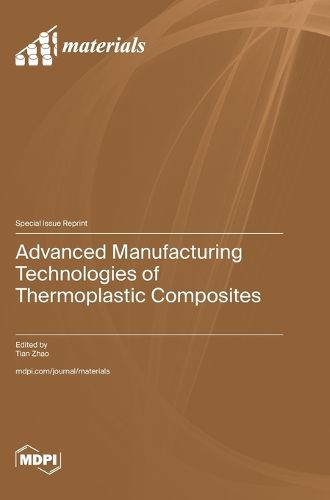Readings Newsletter
Become a Readings Member to make your shopping experience even easier.
Sign in or sign up for free!
You’re not far away from qualifying for FREE standard shipping within Australia
You’ve qualified for FREE standard shipping within Australia
The cart is loading…






This title is printed to order. This book may have been self-published. If so, we cannot guarantee the quality of the content. In the main most books will have gone through the editing process however some may not. We therefore suggest that you be aware of this before ordering this book. If in doubt check either the author or publisher’s details as we are unable to accept any returns unless they are faulty. Please contact us if you have any questions.
It is well known that thermoplastic composites are increasingly applied to aerospace and automotive engineering, owing to their versatile properties, such as great fracture toughness and impact resistance, cycling possibility, infinite shelf life, etc. One of the most attractive properties of thermoplastic composites is that they can be fabricated by using out-of-autoclave (OOA) techniques, e.g., thermal forming, welding and 3D printing, etc., which provides them super cost-effective manufacturing processes. Based on the driving force from the continuous increase in the demand in aircraft or automotive industries combined with the announcement for lowering the environmental impact from aviation emissions, the thermoplastic composite market is believed to show an exponential increase in the following decades. However, there are still numerous scientific and technical knowledge gaps lying behind their manufacturing processes, which suppress the readiness levels and hence limit the current applications of thermoplastic composites. In total, 10 research articles are collected in this Special Issue, aiming at gaining deeper insights into the physical evolution mechanisms of the advanced manufacturing techniques of thermoplastic composites, thus laying a solid foundation for their further industrial applications.
$9.00 standard shipping within Australia
FREE standard shipping within Australia for orders over $100.00
Express & International shipping calculated at checkout
This title is printed to order. This book may have been self-published. If so, we cannot guarantee the quality of the content. In the main most books will have gone through the editing process however some may not. We therefore suggest that you be aware of this before ordering this book. If in doubt check either the author or publisher’s details as we are unable to accept any returns unless they are faulty. Please contact us if you have any questions.
It is well known that thermoplastic composites are increasingly applied to aerospace and automotive engineering, owing to their versatile properties, such as great fracture toughness and impact resistance, cycling possibility, infinite shelf life, etc. One of the most attractive properties of thermoplastic composites is that they can be fabricated by using out-of-autoclave (OOA) techniques, e.g., thermal forming, welding and 3D printing, etc., which provides them super cost-effective manufacturing processes. Based on the driving force from the continuous increase in the demand in aircraft or automotive industries combined with the announcement for lowering the environmental impact from aviation emissions, the thermoplastic composite market is believed to show an exponential increase in the following decades. However, there are still numerous scientific and technical knowledge gaps lying behind their manufacturing processes, which suppress the readiness levels and hence limit the current applications of thermoplastic composites. In total, 10 research articles are collected in this Special Issue, aiming at gaining deeper insights into the physical evolution mechanisms of the advanced manufacturing techniques of thermoplastic composites, thus laying a solid foundation for their further industrial applications.